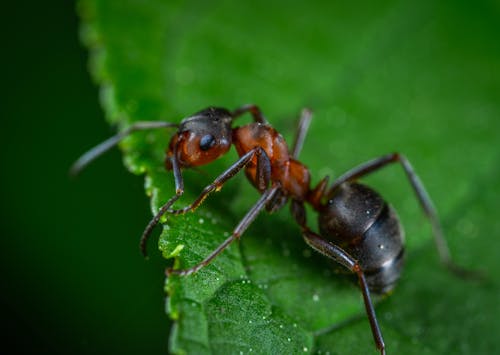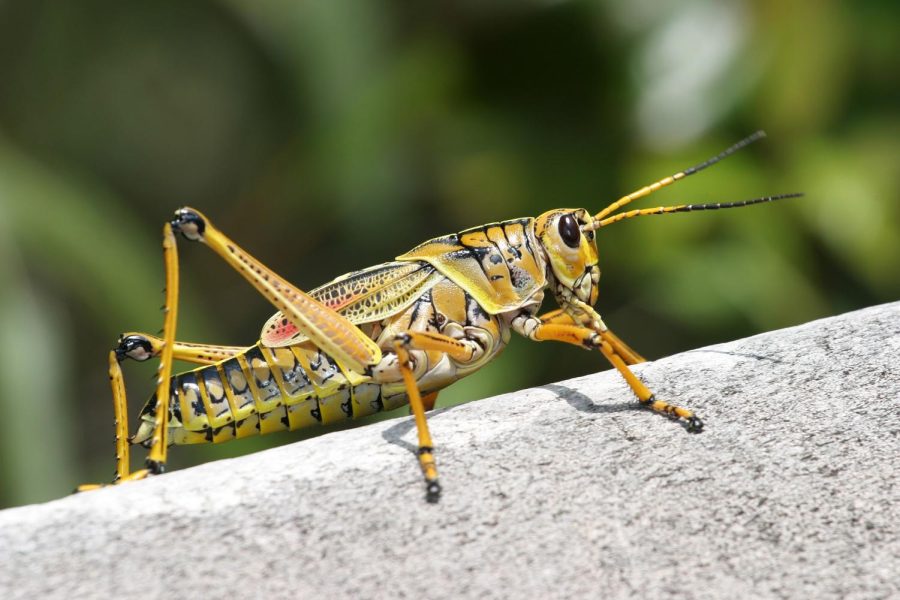Invasive Species: They Won’t Leaf us Alone.
May 11, 2023
I was sitting with my family the other day and a grasshopper covered the back patio screens. My dad started to kill these grasshoppers, and I was confused. As a native Floridian, I was always quite fond of grasshoppers. Yet these grasshoppers, Eastern lubber grasshopper, is an invasive species in Florida that causes extreme damage to the local ecosystem. Invasive species have become so common that people are now struggling to be able to identify the invasive species.

The iguana, a species commonly found across Florida, is invasive and has been destroying the state. There are two common ways in which invasive species will be introduced to the state. Some hitch rides on Cuban cargo ships, while others are pets that were released into the wild. This is the case for many of the invasive species that are in Florida, such as the Burmese python, one of Florida’s most infamous invasive species. Iguana is a risk to your pet’s health, with iguanas often spreading salmonella to pets. Iguana has also been notorious for causing property damage and power outages. They have been known to fall from trees when it gets too cold out, often landing on cars or a person, and since their size can reach over 5 feet, it causes a lot of damage. They also speed up erosion near bodies of water. Iguanas are so much of a problem, they pay people to kill iguanas creating the profession of iguana hunters.
Continuing on the reptile theme is the brown anole, which is a small lizard around 5-8 inches. They were introduced to the keys first in the late 1800s. Similar to the iguana, it is most likely that they were brought here on cargo ships from the Caribbean. Although there are a few benefits of the brown anole, like keeping the spider population at bay, they are ultimately detrimental to the environment. With them being considered one of the most common Florida lizard species, they have been out-competing the native species and even eating their native Florida counterpart, the green anole.
The brown Northern curly-tailed lizards are also a common invasive species. They were introduced to Florida through the pet trade and as a way to treat pests in sugarcane crops. Although it did handle the pest issues, they didn’t stop at sugar cane farms. The lizard spread across Florida out-competing the native species. They also will eat almost everything and that includes the native Florida lizard species. As a Floridian, 10 years ago we would only see them occasionally. Now it is constant; the sidewalks are covered in them.
All the other attempts at pest control in sugar farms with nonnative animals went so well, almost always ending up in invasive species. The next attempt? Cane toads, most notorious for their pet kill count, were introduced for pest control in sugar cane farms. Cane toads are toxic to the creatures who eat them. This could be native species, but pets often try to lick or eat cane toads and end up dead or at the vet. They also outcompete native frog species and are linked to the extinction or decline in the population of multiple species. The best part of the cane toad is that they are extremely hard to kill. I watched a cane toad get stabbed and it hopped away. We have tried the freeze method, putting them in a freezer, or the other recommended way of hitting them with a hammer and it still lives. Some methods are recommended but do be careful of the dangerous toxin they can create.

Red imported fire ants are an invasive species that are highly aggressive and can cause damage. They most likely came from the soil on cargo ships. These fire ants displace the native ant species and cause issues with food sources for native species. These ants do not just disrupt the ecosystem, but also cause issues for people. With their bite hurting, it also creates the risk of the bites getting infected. They not only bite humans, but also pets and other animals, which causes a great amount of distress and pain to those animals. They also create structural damage and can cause damage to electrical equipment.
Wild boars came to Florida originally in 1539, but also in the 20th century because they were brought to Florida for hunters. They are native to areas in Europe and Asia. They feed on native tree species and other seedlings, destroying Florida’s local forests and local ecosystems. Wild hogs are also very aggressive, so if you see them, try and stay farther away due to the fact they are aggressive and will attack you. Many people hunt and eat wild boars. Florida allocated 75 million dollars in 2018 to try and control the wild pig population.
These are just some of the invasive species littering Florida from other animals like wild boars to plants such as the Brazilian Peppertree. They have been destroying the ecosystem and murdering the natural species. The Florida government has been working in an attempt to minimize the spread of these plants and animals, but can only do so much. It is important for the citizens to be aware and do their part to help.








